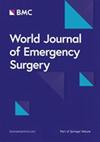Validation of continuous intraabdominal pressure measurement: feasibility and accuracy assessment using a capsular device in in-vivo studies
IF 5.8
1区 医学
Q1 EMERGENCY MEDICINE
引用次数: 0
Abstract
Monitoring Intraabdominal Pressure (IAP) is essential in critical care, as elevated IAP can lead to severe complications, including Abdominal Compartment Syndrome (ACS). Advances in technology, such as digital capsules, have opened new avenues for measuring IAP non-invasively. This study assesses the feasibility and effectiveness of using a capsular device for IAP measurement in an animal model. In our controlled experiment, we anesthetized pigs and simulated elevated IAP conditions by infusing CO2 into the peritoneal cavity. We compared IAP measurements obtained from three different methods: an intravesical catheter (IAPivp), a capsular device (IAPdot), and a direct peritoneal catheter (IAPdir). The data from these methods were analyzed to evaluate agreement and accuracy. The capsular sensor (IAPdot) provided continuous and accurate detection of IAP over 144 h, with a total of 53,065,487 measurement triplets recorded. The correlation coefficient (R²) between IAPdot and IAPdir was excellent at 0.9241, demonstrating high agreement. Similarly, IAPivp and IAPdir showed strong correlation with an R² of 0.9168. The use of capsular sensors for continuous and accurate assessment of IAP marks a significant advancement in the field of critical care monitoring. The high correlation between measurements from different locations and methods underscores the potential of capsular devices to transform clinical practices by providing reliable, non-invasive IAP monitoring.连续腹腔内压力测量的验证:在体内研究中使用囊式装置进行可行性和准确性评估
监测腹腔内压力 (IAP) 在重症监护中至关重要,因为 IAP 升高会导致严重的并发症,包括腹腔隔室综合症 (ACS)。数字胶囊等技术的进步为无创测量 IAP 开辟了新的途径。本研究评估了在动物模型中使用胶囊装置测量 IAP 的可行性和有效性。在对照实验中,我们对猪进行了麻醉,并通过向腹腔注入二氧化碳来模拟升高的 IAP 条件。我们比较了三种不同方法获得的 IAP 测量值:膀胱内导管 (IAPivp)、囊状装置 (IAPdot) 和直接腹膜导管 (IAPdir)。对这些方法的数据进行了分析,以评估一致性和准确性。胶囊传感器(IAPdot)可在 144 小时内连续准确地检测 IAP,共记录了 53,065,487 次测量。IAPdot 和 IAPdir 之间的相关系数 (R²) 为 0.9241,表现出很高的一致性。同样,IAPivp 和 IAPdir 也显示出很强的相关性,R² 为 0.9168。使用囊式传感器对 IAP 进行连续、准确的评估标志着重症监护领域的一大进步。来自不同位置和方法的测量结果之间的高度相关性强调了胶囊装置通过提供可靠的无创 IAP 监测改变临床实践的潜力。
本文章由计算机程序翻译,如有差异,请以英文原文为准。
求助全文
约1分钟内获得全文
求助全文
来源期刊

World Journal of Emergency Surgery
EMERGENCY MEDICINE-SURGERY
CiteScore
14.50
自引率
5.00%
发文量
60
审稿时长
10 weeks
期刊介绍:
The World Journal of Emergency Surgery is an open access, peer-reviewed journal covering all facets of clinical and basic research in traumatic and non-traumatic emergency surgery and related fields. Topics include emergency surgery, acute care surgery, trauma surgery, intensive care, trauma management, and resuscitation, among others.
 求助内容:
求助内容: 应助结果提醒方式:
应助结果提醒方式:


